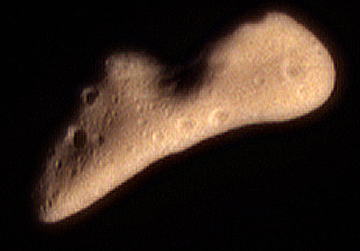
January 6, 2001 Laurel, Maryland - NASA said OK this week to America's and the world's first attempt to land on an asteroid - or at least touch down briefly. Scientists on the Near Earth Asteroid Rendezvous (NEAR) team at Johns Hopkins University's Applied Physics Laboratory in Laurel, Maryland have been controlling NASA's NEAR Shoemaker spacecraft orbiting the asteroid Eros since February 14, 2000. Now, nearly one year to the day on February 12, 2001, NEAR's rocket engines will be turned on to slow the orbiter's descent toward Eros at about 7 miles per hour.
Click here to subscribe and get instant access to read this report.
Click here to check your existing subscription status.
Existing members, login below:
© 1998 - 2024 by Linda Moulton Howe.
All Rights Reserved.

